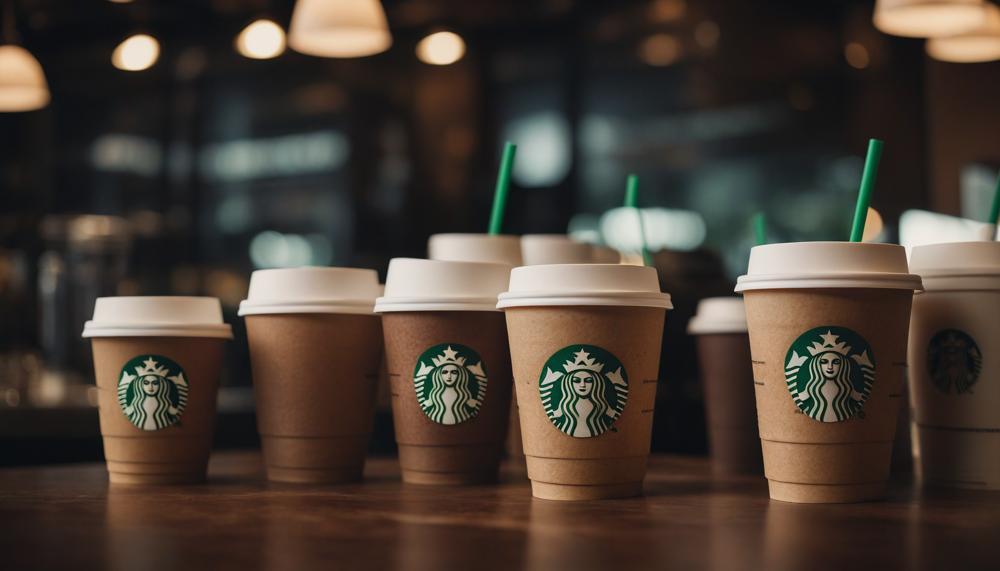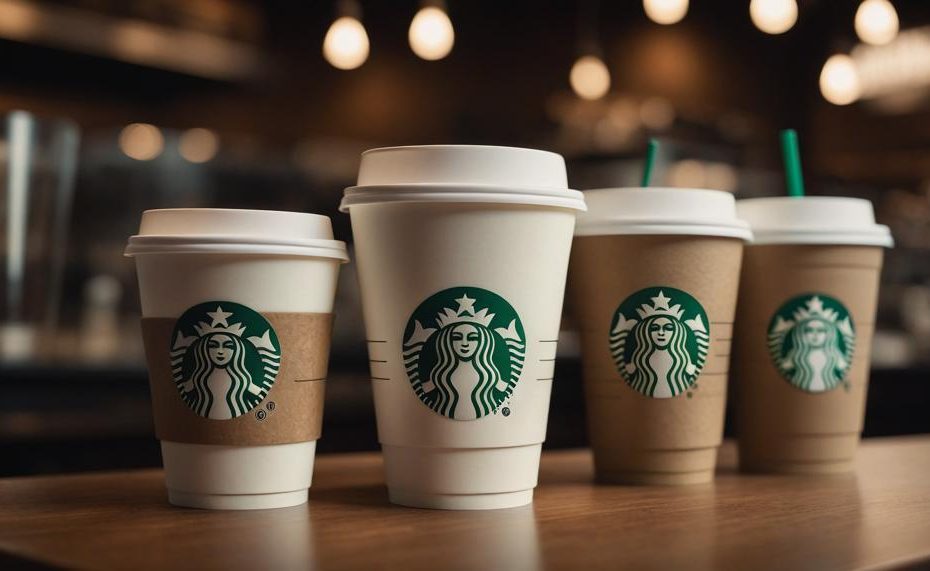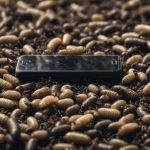If you’ve ever pondered the recyclability of that iconic Starbucks cup in your hand, you’re not alone. The simple answer is: not really. Despite Starbucks’ notable strides toward sustainability, the majority of their cups still fall short of being fully recyclable. This question digs into more than just your morning coffee—it’s about understanding our environmental footprint and the challenges of sustainable packaging.
Here’s the scoop: while Starbucks has taken significant steps to minimize waste, their cups remain problematic due to their composition. The paper exterior contains 10% recycled materials, but it’s the plastic lining inside that poses a recycling dilemma. This plastic barrier, essential for holding liquids, prevents the cups from being processed by most standard recycling facilities. Consequently, many of these cups end up in landfills, where they break down into harmful microplastics.
Key Points to Remember:
- Material Composition: Starbucks cups are made of paper with a plastic lining, which complicates recycling.
- Current Recycling Efforts: The cups can technically be recycled if returned to Starbucks stores, but this is not a common practice among customers.
- Innovations and Challenges: Starbucks has introduced more recyclable lids and sleeves, and they are working on developing a fully compostable cup.
- Environmental Impact: Despite efforts, most Starbucks cups still contribute to landfill waste and microplastic pollution.
So, next time you’re sipping your latte, consider the cup it’s in. While the journey towards a fully recyclable or compostable cup continues, we as consumers can play a part by opting for reusable cups and supporting sustainable practices.
Contents
Are Starbucks Cups Recyclable?
The short answer is no, Starbucks cups are not fully recyclable due to their plastic lining. Here is a detailed look at the current state of recycling Starbucks cups and how to dispose of them properly.
Current State of Recycling Starbucks Cups
- Plastic Lining Issue: Starbucks cups have a plastic lining that makes them non-recyclable in most recycling facilities. This lining prevents the paper exterior from being processed and repurposed.
- Recycled Content: The exterior paper of the cups is made from 10% recycled materials, but this does not mitigate the problem caused by the plastic lining.
- Landfill Impact: Most Starbucks cups end up in landfills where the plastic lining breaks down into harmful microplastics.
- Recycling Programs: In some regions, Starbucks has implemented recycling programs, but participation is limited and not widespread.
- Future Goals: Starbucks aims to increase the recyclability, reusability, and recycled content of their cups by 202They are also developing a compostable cup that can be recycled more easily.
Proper Disposal Methods
To properly dispose of Starbucks cups, follow these guidelines:
- Return to Store: The best method is to return the cups to a Starbucks store with a recycling program. Many stores have designated recycling bins for their cups.
- Separate Components: If returning to a store is not feasible, separate the components:
- Cup: Try to separate the plastic lining from the paper exterior, though this can be difficult.
- Lid: The plastic lid is recyclable in most curbside programs.
- Sleeve: The cardboard sleeve is also recyclable in most curbside programs.
Table of Disposal Components
| Component | Recyclability | Disposal Method |
| Cup | Non-recyclable due to plastic lining | Return to store or separate plastic lining if possible |
| Lid | Recyclable | Recycle in curbside program |
| Sleeve | Recyclable | Recycle in curbside program |
Starbucks’ Compostable Paper Cups
Starbucks’ compostable paper cups are designed to be disposed of through composting or recycling processes, but practical disposal methods and true recyclability are more complex. Here’s a detailed analysis:
Disposal of Starbucks’ Compostable Paper Cups
| Method | Details | Challenges |
| In-Store Recycling | Starbucks provides recycling bins in-store where cups can be properly separated and processed. | Limited by customer participation and correct sorting by staff. |
| At-Home Recycling | Customers are encouraged to recycle cups at home by separating the plastic lining from the paper exterior. | Requires effort and understanding from customers; not all recycling programs accept mixed materials. |
| Commercial Composting | Cups designed to be compostable can be processed at commercial composting facilities. | Such facilities are not widespread, and availability varies by region. |
Recyclability of Starbucks’ Compostable Paper Cups
Starbucks’ efforts to create a fully recyclable cup face significant hurdles. The cups, while marketed as compostable, still include a plastic lining that complicates recycling. Here’s a breakdown:
- Plastic Lining Issue: The plastic lining prevents the cups from being recycled with regular paper products. This plastic component must be separated before the cup can be recycled, which is not typically feasible in standard recycling systems.
- Microplastics: When these cups are improperly disposed of and end up in landfills, the plastic lining can degrade into microplastics, contributing to environmental pollution.
- Composting Limitations: For cups to be composted, they must be sent to commercial composting facilities equipped to handle such materials. Home composting systems usually cannot process the plastic lining effectively.
Practical Steps for Consumers
For those looking to dispose of Starbucks’ compostable cups responsibly:
- Return to Store: Take the cup back to a Starbucks location with proper recycling bins.
- Separate Components: If possible, separate the plastic lining from the paper before recycling.
- Seek Local Composting Options: Find out if local composting facilities accept these types of compostable cups.
History of Starbucks Cups and Their Recyclability

Starbucks’ journey to improve the recyclability of their cups has been a winding road, marked by incremental changes and ongoing challenges. Here’s how their cups have evolved over the years:
| Year | Innovation | Recyclability |
| 1984 | Introduction of paper cups with plastic lining | Minimal recyclability due to plastic lining making it difficult for standard recycling facilities |
| 2006 | Launch of recycled content cups | Incorporation of 10% post-consumer recycled fibre improved sustainability but still faced recycling challenges |
| 2018 | NextGen Cup Challenge partnership | Global initiative to create a fully recyclable and compostable cup. Progress ongoing with various prototypes tested |
| 2020 | Reusable cup programme | Encouragement of personal cup use and introduction of reusable cup incentives, reducing single-use cup waste |
| 2022 | Compostable cup trials | Trials of new biodegradable liners aimed at improving compostability while maintaining cup integrity |
How to Properly Dispose of Starbucks Cups
To properly dispose of Starbucks cups, follow these steps to minimise environmental impact and promote sustainability.
Separate Components
Each part of the Starbucks cup has a different disposal method:
- Cup: The paper cup has a plastic lining, making it non-recyclable in most curbside programs.
- Lid: The plastic lid is generally recyclable.
- Sleeve: The cardboard sleeve is recyclable.
Recycling the Lid and Sleeve
Remove the lid and sleeve from the cup. Clean any residue before recycling.
- Lid: Place in the plastics recycling bin.
- Sleeve: Place in the paper recycling bin.
Disposing of the Cup
Since most curbside recycling programs do not accept the plastic-lined cup, it’s better to check for specific recycling options:
- Store Return: Some Starbucks locations have recycling bins for their cups.
- Special Programs: Look for programs that accept mixed material items.
Using Reusable Cups
Consider using Starbucks’ reusable cups to avoid the waste problem altogether. These can be used multiple times and usually offer a discount on your drink.
Compostable Options
In areas where compostable cups are available, ensure to dispose of them in commercial composting facilities.
Conclusion
Starbucks cups have sparked considerable debate regarding their recyclability. Despite Starbucks’ commendable sustainability initiatives, their iconic cups remain largely non-recyclable. The primary issue lies in the cup’s composition: a paper exterior combined with a plastic lining essential for liquid retention. This plastic barrier hinders the recycling process at most standard facilities, resulting in many cups ending up in landfills and breaking down into harmful microplastics.
Starbucks has made strides by incorporating 10% recycled materials into their cups and introducing more recyclable lids and sleeves. They are also working on developing a fully compostable cup. However, these efforts have not yet resolved the core recycling challenge.
Consumers can help by returning cups to Starbucks stores that offer recycling programs or by opting for reusable cups. Separating the cup’s components for disposal can also aid in proper recycling. The journey towards a fully recyclable or compostable Starbucks cup is ongoing, and consumer choices play a crucial role in driving sustainable practices.





